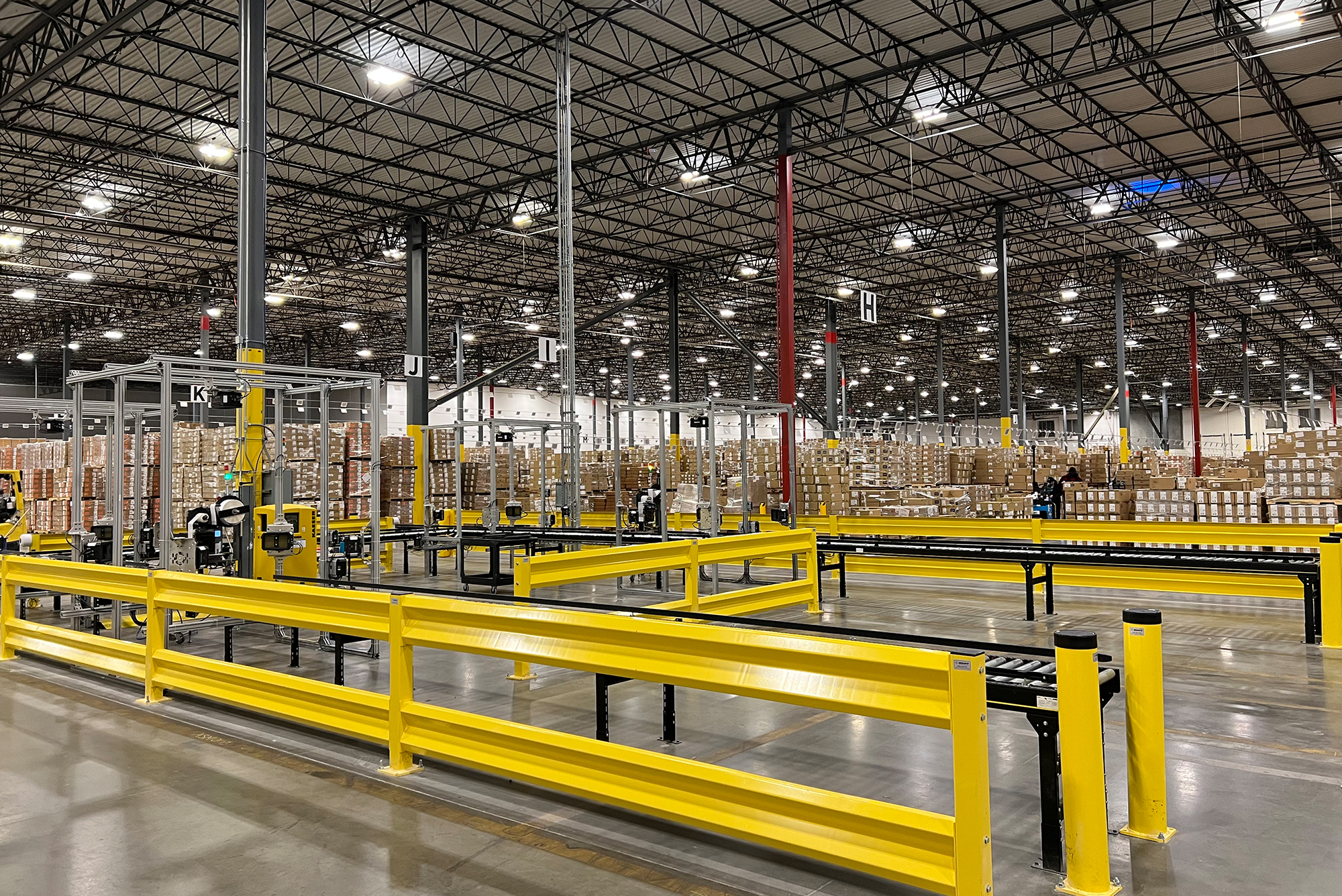In today’s fast-paced and highly competitive business landscape, efficient fulfillment operations are crucial for success. What can stop this train toward success are bottlenecks: a point of congestion in assembly that causes delay, inefficiency, and ultimately a loss of any potential revenue. As e-commerce continues to grow and customer expectations rise, businesses must find ways to decrease bottlenecks in packaging, labeling, shipping, and other fulfillment processes. One powerful solution that has gained significant traction is the automation of fulfillment centers.
WHAT BOTTLENECKS CAN CAUSE
A bottleneck could be a variety of factors. Some are simple blips in the production process like overstock of supplies or disorganization between facility communicators. Others can include a reduction in employee morale or a stalled production line that required too much time to complete in the first place. All of these can be changed, but first must be identified. To understand where to begin, researching how your facility operates is the right start. Restructuring to avoid bottlenecks is not easy, but luckily, automation is the simple solution.
THE MAIN CHALLENGE
The most crucial part to begin eliminating these bottlenecks starts with examining the current process and studying the first problem. How can automation help this specific step? Mike Shannon, an account executive for SRSI, advises how to start the improvement process, “bottlenecks are a part of process flow, you’re only as fast as your slowest system.” Time is the most important factor to chip away. Start streamlining each step of your process with the best option for optimizing time. At the end of the day, “bottlenecks slow the flow from beginning to end,” (Shannon), however, when automation becomes involved, these steps are faster, cleaner, more accurate, and ultimately increase throughput ending in a more impactful ROI.
HOW AUTOMATION CAN HELP
Automation can decrease any occurrences of bottlenecks either in software, ASRS systems, or any warehouse technologies in several ways. Steve Wilson, an account executive for SRSI, puts this idea simply, “it’s not about eliminating labor, but labor avoidance.” Automation doesn’t have to mean people are losing their jobs, but rather, jobs are getting easier and pay can increase. Recent studies show how the 2020 pandemic affected warehouse management by shining light on bottlenecks hidden in manufacturing. By embracing automation, these now have nowhere to hide. Below are some of the best ways fulfillment centers can begin implementing automation to help handle their operations:
- Enhancing Order Accuracy and Efficiency: One of the primary benefits of automating fulfillment centers is the improvement in order accuracy and efficiency. Manual processes are prone to human errors, leading to incorrect shipments, misplaced items, and delays. By implementing automation tools such as barcode scanning, label printing, and delivery channel optimization, businesses can significantly reduce errors and streamline the order fulfillment process. Automated systems ensure that the right products are picked, packed, and shipped, minimizing the chances of mistakes, and enhancing overall efficiency.
- Accelerating Order Processing and Shipping: Speed is a critical factor in meeting customer expectations and gaining a competitive edge. Automating fulfillment centers enable businesses to process and ship orders at a much faster pace. With the help of smart warehousing solutions, such as automated transportation systems like pallet conveyor systems, roller conveyors, automated guided vehicle (AGVs), and autonomous mobile robots (AMRs), the time-consuming manual tasks of moving goods within the warehouse can be eliminated. This allows employees to focus on more value-adding tasks while the automated systems handle the repetitive movements. By reducing the time spent on product movements, businesses can accelerate the entire fulfillment process, ensuring timely deliveries and customer satisfaction.
- Improving Warehouse Efficiency and Productivity: Automation technology offers a significant boost to warehouse efficiency and productivity. By adopting automated storage and retrieval systems (AS/RS), businesses can optimize goods receipt, storage, and dispatch processes. AS/RS ensures greater efficiency in locating and retrieving products, minimizing errors, and enhancing safety for both products and operators. Additionally, automated order management systems enable retailers and wholesalers to sort packages accurately, print labels, and optimize delivery channels. These streamlined processes not only save time but also reduce labor costs and improve overall productivity.
- Real-Time Data and Reporting Capabilities: To make informed business decisions, real-time data and reporting capabilities are essential across the entire supply chain management process. Automated inventory management tools provide businesses with the ability to track inventory levels, monitor order statuses, and analyze performance metrics. This data-driven approach allows for better forecasting, inventory optimization, and identifying areas for improvement. By leveraging real-time data, businesses can make proactive decisions, address bottlenecks promptly, and continuously optimize their fulfillment operations.
Conclusion
In an era where speed, accuracy, and efficiency are paramount, automating fulfillment centers have become a necessity for businesses. By investing in the right tools and technologies, companies can eliminate bottlenecks in packaging, labeling, shipping, and other fulfillment processes. Automation enhances order accuracy, accelerates order processing and shipping, improves warehouse efficiency and productivity, and provides real-time data for better decision-making. Embracing automation in fulfillment centers not only streamlines operations but also enables businesses to meet customer expectations, gain a competitive edge, and drive growth in the dynamic world of e-commerce.
 Skip to main content
Skip to main content







